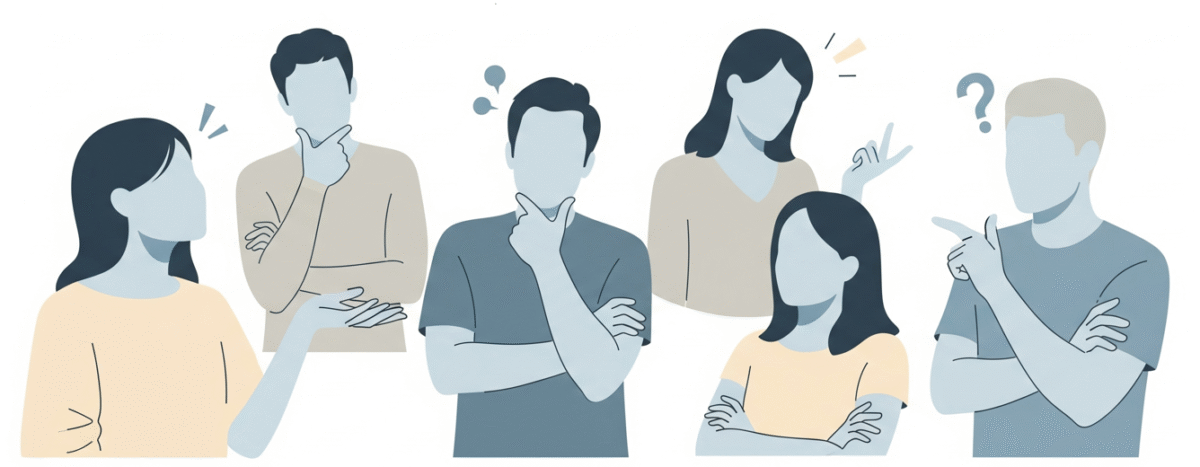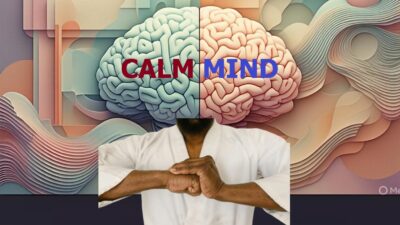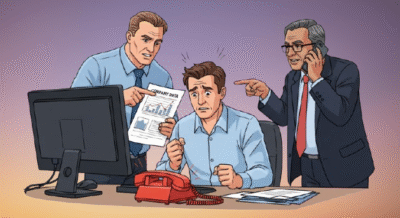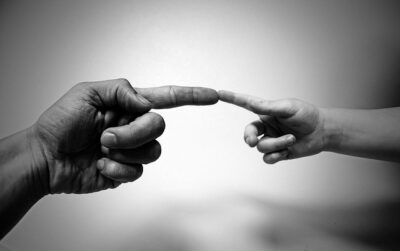Welcome to this in-depth exploration of body language analysis that takes you through practical, moment-by-moment examples you can relate to immediately. In this article, you will learn how to observe, interpret, and apply nonverbal cues in everyday interactions. Every sentence is designed to guide you with clear, actionable steps while ensuring that the narrative remains engaging, friendly, and entirely respectful of universal values. With this guide, discover how body language analysis can transform your daily encounters and elevate your communication skills.
Table of contents
1. Understanding body language analysis
1.1 What Is body language analysis?
body language analysis is the art of deciphering unspoken signals through gestures, posture, and facial expressions. It involves actively watching minute details such as a slight tilt of the head or a fleeting smile. Therefore, you can develop a deeper understanding of a person’s thoughts and emotions without uttering a word. Additionally, this skill allows you to notice subtle changes in attitude almost immediately, making every interaction more meaningful.
In simple terms, Body Language Reading reveals layers of meaning behind verbal communication. For example, maintaining eye contact may indicate engagement, whereas a downcast gaze might reveal discomfort. Consequently, mastering this skill requires regular practice and mindful observation during everyday encounters.
1.2 The Significance of Body Language Reading
Understanding nonverbal cues enhances your interpersonal skills and fosters stronger relationships. In every conversation, you automatically send signals; therefore, learning to read these cues empowers you to respond appropriately. When you spot nervous fidgeting or closed-off postures, you can tailor your approach to create a more supportive conversation. Moreover, studies suggest that nonverbal signals influence perceptions in both personal and professional settings, and body language analysis is often the key to unlocking these hidden dynamics.
Furthermore, effective body language analysis can help you understand group dynamics, enabling you to lead or cooperate with others more successfully. Ultimately, it bridges communication gaps and builds empathy by transcending the words spoken.

2. Key Techniques in Body Language Reading
Reading people’s gestures effectively involves a series of practical techniques. Below are the most reliable cues and methods to observe nonverbal communication closely:
- Facial Expressions: Notice the movement of facial muscles; a genuine smile, for example, engages both the mouth and eyes.
- Posture: An upright posture often indicates confidence, while slouched shoulders can signal fatigue or disinterest.
- Gestures: Hand movements, such as steepling the fingertips, typically suggest that a person is feeling in control or thoughtful.
- Eye Contact: Prolonged or sporadic eye contact may reveal a mix of emotions, ranging from enthusiasm to anxiety.
To add clarity, consider this table summarizing common signals:
| Cue | Signal | Interpretation |
|---|---|---|
| Crossed Arms | Closed-off stance | Defensiveness, discomfort, or a need for self-protection |
| Direct Eye Contact | Engagement | Confidence, interest, or sometimes a challenge |
| Fidgeting | Restlessness | Anxiety, nervousness, or an attempt to release tension |
| Leaning Forward | Increased involvement | Active listening, interest, or eagerness to contribute |
Each of these techniques serves as a vital tool in body language analysis, providing layers of context to every interaction. Therefore, when you practice these techniques consistently, you gain a more accurate reading of the emotional landscape around you.
3. Real-Life Body Language Reading Scenarios
The following detailed narratives illustrate how you can apply Body Language Reading in everyday situations. Every example unfolds moment by moment, ensuring that you gain a realistic understanding of the process.
3.1 A Social Encounter: Reading Subtle Cues
Imagine you attend a community gathering in which you find yourself conversing with a new acquaintance. At the outset, you observe that he stands with his hands loosely clasped in front of him, suggesting openness. However, as the conversation progresses, he slowly crosses his arms. At that very moment, you notice a subtle change in his smile—a slight quiver that hints at unease. Gradually, his eyes dart around the room, and his posture becomes more rigid.
In this scenario, you practice body language analysis by:
- Noticing the Transition: Initially, his open stance signals comfort. Then, as his arms cross, you infer that he may be feeling defensive.
- Interpreting Micro-Expressions: When his smile falters just a little, you understand that he might harbor reservations or anxiety about the topic at hand.
- Assessing Environment Influence: Observing his eye movement, you conclude that he is distracted, possibly feeling overwhelmed or uncertain.
Because you actively interpret these cues, you decide to gently shift the conversation to a lighter subject—a move that immediately relaxes his body language. His arms uncross, and a genuine, warm smile reappears. Consequently, your ability to apply Body Language Reading in real time helps create an atmosphere of mutual ease and understanding. This moment-by-moment analysis demonstrates how carefully observing transitions in body language can foster better communication.
3.2 A Professional Setting: Interpreting Nonverbal Communication
Now, envision a business meeting where you are presenting a new project idea. At the start, you notice that every participant is focused, evident from their direct eye contact and attentive posture. However, midway through your presentation, one of the colleagues begins to lean back slowly, and his gaze wanders toward his notes. Simultaneously, his hands start tapping lightly on the table.
Acting on your body language analysis skills, you evaluate these signals:
- Leaning Back and Wandering Eyes: These indicate that the colleague might be disengaging or is unsure about the project details.
- Tapping Hands: This subtle gesture often conveys nervousness or impatience.
Therefore, you decide to pause and invite questions, asking for feedback with an open tone. As the discussion resumes, you observe that the colleague gradually straightens up, making deliberate eye contact and nodding at your explanations. This shift, recognized through careful Body Language Reading, reassures you that he has gained clarity and interest.
In this professional context, every nonverbal cue helps refine your presentation style. By tuning into individual signals, you tailor your approach dynamically, ensuring that each stakeholder feels understood and engaged. Ultimately, such proactive interpretations enable you to bridge communication gaps and achieve collaborative success.
4. Practical Steps and Tips for body language analysis
Implementing body language analysis in daily life requires practice, attention, and an analytical mindset. Here are practical steps that you can follow to sharpen your skills immediately:
- Enhance Your Awareness:
- Start by observing people around you in low-stakes environments such as local cafes or community events.
- Look at how individuals’ posture changes when engaged in conversations, and note any accompanying shifts in facial expressions.
- Practice Active Observation:
- Focus on one aspect at a time—first, the gestures; next, the posture; and then, the expressions.
- Use transitional phrases to summarize what you observe. For example, “Now that I see him crossing his arms, it suggests he might be feeling defensive.”
- Engage in Reflective Listening:
- When interacting, mirror the other person’s nonverbal cues gently to build rapport. This strategy leverages Body Language Reading to form connections.
- Ask clarifying questions when something seems off. For instance, “I noticed your expression changed—would you like to share more about your thoughts?”
- Keep a Journal:
- Write down a few observations each day. Over time, patterns will emerge, helping you understand common signals and their interpretations.
- Record specific instances of what gestures led to positive or negative outcomes, and note any adjustments you made in your response.
- Integrate Feedback:
- Observe your own body language in conversations. Ask trusted friends or colleagues for feedback on your nonverbal cues.
- This two-way practice ensures that you use Body Language Reading not only as a tool for understanding others but also for self-improvement.
Using these steps consistently will help you tune into the subtleties of interactions, thereby making body language analysis an invaluable part of your communication toolkit.
5. Overcoming Challenges in body language analysis
Although Body Language Reading offers many advantages, you may encounter challenges along the way. Common pitfalls include misinterpreting cultural differences or over-analyzing fleeting gestures. Here are strategies to address these difficulties:
- Understand Context: Every gesture varies with context. For example, someone might cross their arms simply because they feel chilly rather than defensive. Therefore, always consider environmental factors and the situation at hand before drawing conclusions.
- Avoid Overgeneralization: Not every gesture has a fixed meaning. Instead, combine cues from facial expressions, posture, and verbal tone to build a comprehensive view. Additionally, using multiple data points minimizes the risk of misinterpretation.
- Seek Clarification: If you suspect a misunderstanding based on nonverbal cues, add a verbal check. Politely ask, “I noticed you seem a bit uncertain; may I clarify any of my points?” This approach not only confirms your observations but also builds trust.
- Practice Cultural Sensitivity: Different cultures have varying interpretations of body language. Therefore, when interacting with individuals from diverse backgrounds, learn the specific nonverbal cues typical to their context. Embrace this diversity as an opportunity to improve your Body Language Reading skills holistically.
By approaching these challenges with curiosity and humility, you ensure that your skill in Body Language Reading remains both accurate and adaptive. Moreover, acknowledging limitations allows you to continually refine your observational techniques.
6. Summary and Reflective Thoughts on Body Language Reading
In conclusion, mastering Body Language Reading requires dedicated observation, practice, and real-time interpretation of nonverbal signals. As you have seen through the detailed examples above—from social encounters to professional meetings—the art of reading body language transforms everyday communication into a more dynamic, empathetic, and effective interaction.
- Review of Key Points:
- body language analysis enables you to move beyond words, unlocking deeper meanings.
- Step-by-step techniques, such as observing facial expressions and posture, provide clear insights into emotions and intentions.
- Real-life scenarios illustrate how moment-by-moment observations can lead to positive communication outcomes.
- Practical tips, including active observation, reflective listening, and continuous feedback, empower you on this journey.
- Overcoming challenges requires context, cultural sensitivity, and confirmation through conversation.
Ultimately, Body Language Reading is not a static skill but a dynamic process that you refine over time by paying close attention to every detail in how people express themselves. Therefore, whether you’re engaging socially or professionally, your ability to interpret nonverbal cues gives you an upper hand in building genuine connections and understanding others more profoundly.
By integrating these techniques into your daily life, you not only become a better communicator but also a more empathetic listener. Embrace each interaction as an opportunity to learn, grow, and perfect your skills in Body Language Reading.
Additional Insights:
- Consider setting aside dedicated time each week to practice Body Language Reading by observing interactions in public spaces.
- Building a mental checklist of common cues can help you quickly assess the mood and openness of those around you.
- Over time, you might even notice patterns unique to your environment, reinforcing the idea that every setting has its own nonverbal language.
references
- 22 Body Language Examples And What They Show – BetterHelp (February 13, 2025, BetterHelp Editorial Team) https://www.betterhelp.com/advice/body-language/22-body-language-examples-and-what-they-show/
- 30 Body Languages and Their Meanings – EnkiVeryWell (Reputable guide on nonverbal communication) https://www.enkiverywell.com/body-language-examples.html
- 25 Common Body Language Examples in Action – ModernGov (May 2024, Chloe Martin) https://blog.moderngov.com/25-common-body-language-types-plus-examples-in-action






